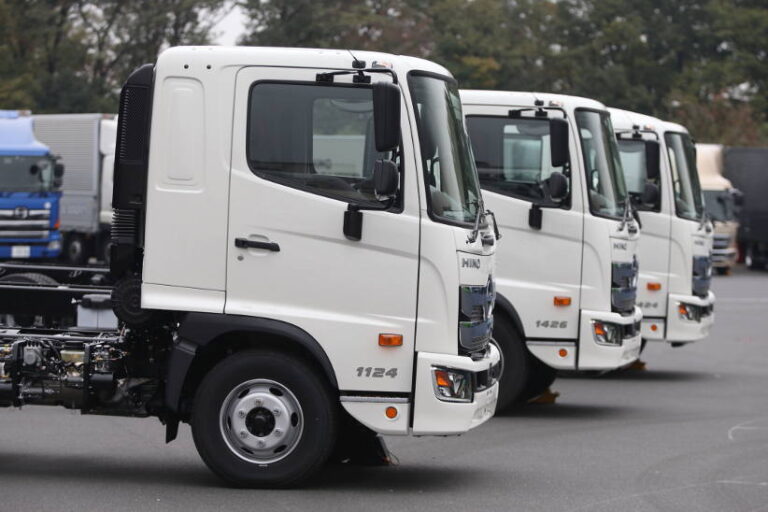For fleet managers overseeing truck operations, understanding the intricacies of vehicle weight limits is essential to ensuring safety, efficiency, and compliance with Australian transport regulations. Despite its importance, terms like Tare, Gross Vehicle Mass (GVM), and Gross Combination Mass (GCM) can be confusing, especially for those new to the trucking industry. This article aims to clarify these concepts and explain how they impact the amount of load your trucks can carry.
Tare weight: The starting point
Tare weight refers to the weight of the truck when it is empty, including all fixed attachments like fuel, oil, spare tyres, and any equipment that is permanently attached to the vehicle. Essentially, it’s the base weight of the vehicle before any cargo is added.
Understanding the Tare weight is crucial because it forms the foundation for calculating the total permissible weight your truck can carry. It is important to note that the Tare weight does not include the driver, passengers, or any load. For fleet managers, knowing the Tare weight of each vehicle in the fleet helps in calculating how much additional weight can be legally added in the form of cargo.
Gross Vehicle Mass (GVM): The legal load limit
The Gross Vehicle Mass (GVM) is the maximum total weight of the truck, including its Tare weight, the driver, passengers, fuel, and the cargo. The GVM is a critical figure because it sets the legal limit on how much weight the truck can safely carry.
For example, if a truck has a GVM of 16,000 kilograms and a Tare weight of 7,000 kilograms, this means the truck can legally carry up to 9,000 kilograms of additional weight, which includes the driver, any passengers, and cargo.
Exceeding the GVM is illegal and dangerous. Overloading a truck can lead to serious safety risks, including increased braking distances, reduced vehicle stability, and potential mechanical failure. Moreover, operating a truck above its GVM can result in fines, penalties, and increased wear and tear on the vehicle, leading to higher maintenance costs.
Gross Combination Mass (GCM): When towing comes into play
When a truck is towing a trailer or another vehicle, the Gross Combination Mass (GCM) becomes an important factor. GCM refers to the maximum permissible combined weight of the truck, the towed vehicle, and everything on board both vehicles.
The GCM is determined by the vehicle manufacturer and is crucial for ensuring that the combined load is within safe limits. For instance, if a truck has a GCM of 40,000 kilograms and its Tare weight is 10,000 kilograms, this means the combined weight of the truck, the trailer, and their cargo must not exceed 40,000 kilograms.
Managing the GCM is especially important when dealing with articulated trucks or any vehicles involved in towing. Exceeding the GCM can compromise the safety and structural integrity of both the truck and the trailer, increasing the risk of accidents.
Why these weight limits matter for Fleet Managers
Understanding Tare, GVM, and GCM is not just a matter of regulatory compliance—it’s about ensuring the safety of your drivers and other road users. Overloading trucks can have severe consequences, including:
- Safety hazards: Overloaded trucks are more prone to accidents due to reduced braking efficiency, increased stopping distances, and compromised handling. This can lead to catastrophic accidents, endangering the lives of your drivers and others on the road.
- Increased wear and tear: Exceeding the GVM or GCM accelerates wear and tear on the vehicle’s components, such as the suspension, tyres, and brakes. This not only shortens the lifespan of your vehicles but also increases maintenance and repair costs.
- Legal consequences: Operating trucks beyond their legal weight limits can result in hefty fines, penalties, and even legal action. Regulatory bodies conduct random weight checks, and non-compliance can lead to the vehicle being grounded, impacting your operations and bottom line.
- Fuel efficiency: Overloaded vehicles tend to consume more fuel, which directly impacts your operating costs. Efficient load management, by adhering to GVM and GCM limits, helps in optimising fuel usage.
Practical tips for Fleet Managers
To effectively manage the weight limits of your fleet, consider the following tips:
- Regularly check weights: Equip your fleet with on-board weighing systems that allow drivers to monitor the weight of their loads in real-time. This helps prevent accidental overloading.
- Driver training: Ensure that your drivers understand the importance of adhering to weight limits and are trained to calculate GVM and GCM for each trip. Provide them with the necessary tools and resources to make accurate calculations.
- Maintenance checks: Regularly service your vehicles to ensure that they remain within their specified GVM and GCM limits. Over time, additional equipment or modifications can affect these limits, so it’s important to reassess them periodically.
- Load planning: When planning routes and loads, consider the weight distribution within the vehicle to avoid uneven loading, which can affect vehicle handling and stability.
For fleet managers, understanding the concepts of Tare, GVM, and GCM is fundamental to managing a safe and efficient trucking operation. By staying within these weight limits, you not only comply with Australian regulations but also protect your assets, reduce operational costs, and, most importantly, ensure the safety of your drivers and other road users.
By implementing the tips provided and fostering a culture of compliance within your fleet, you can mitigate risks and maximise the efficiency and longevity of your vehicles.






